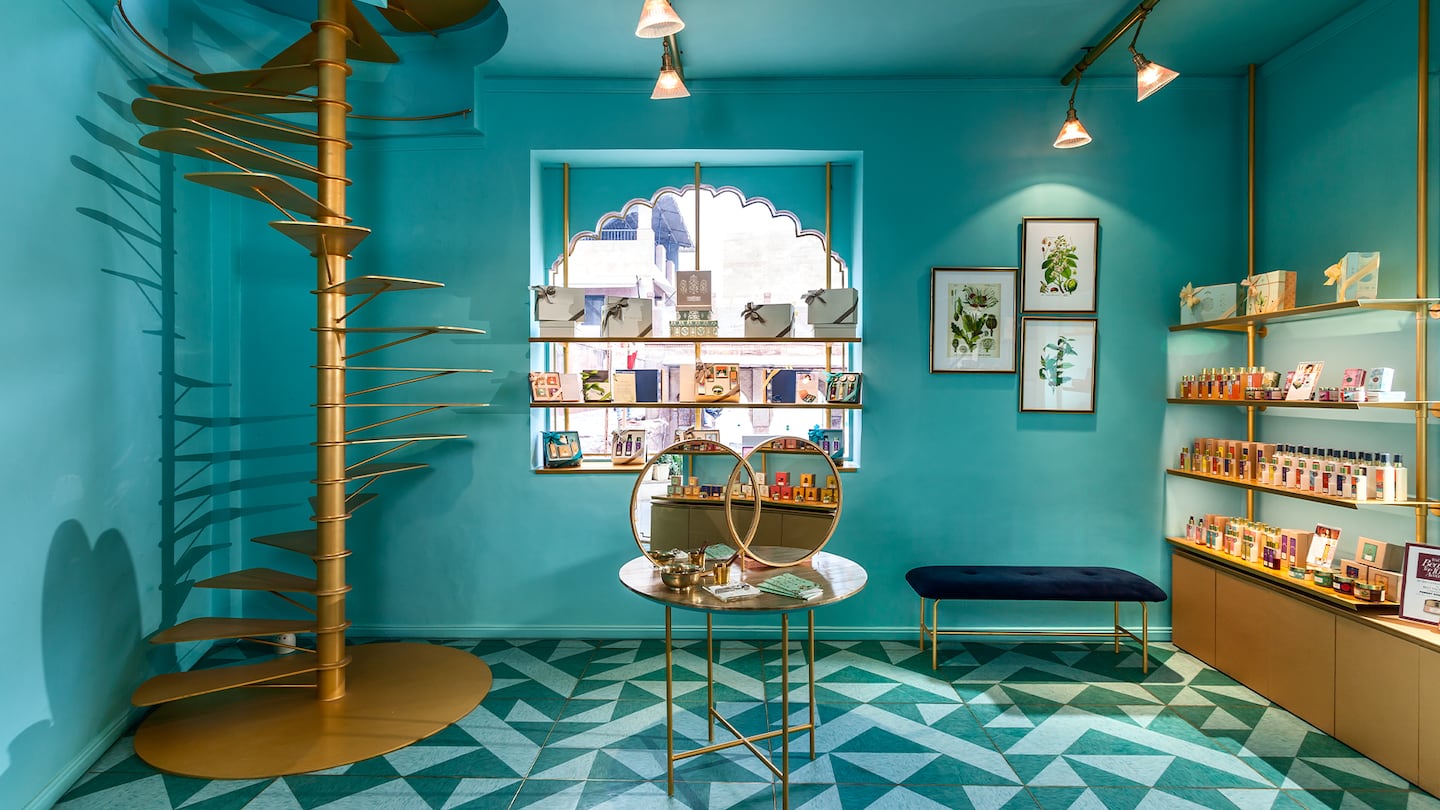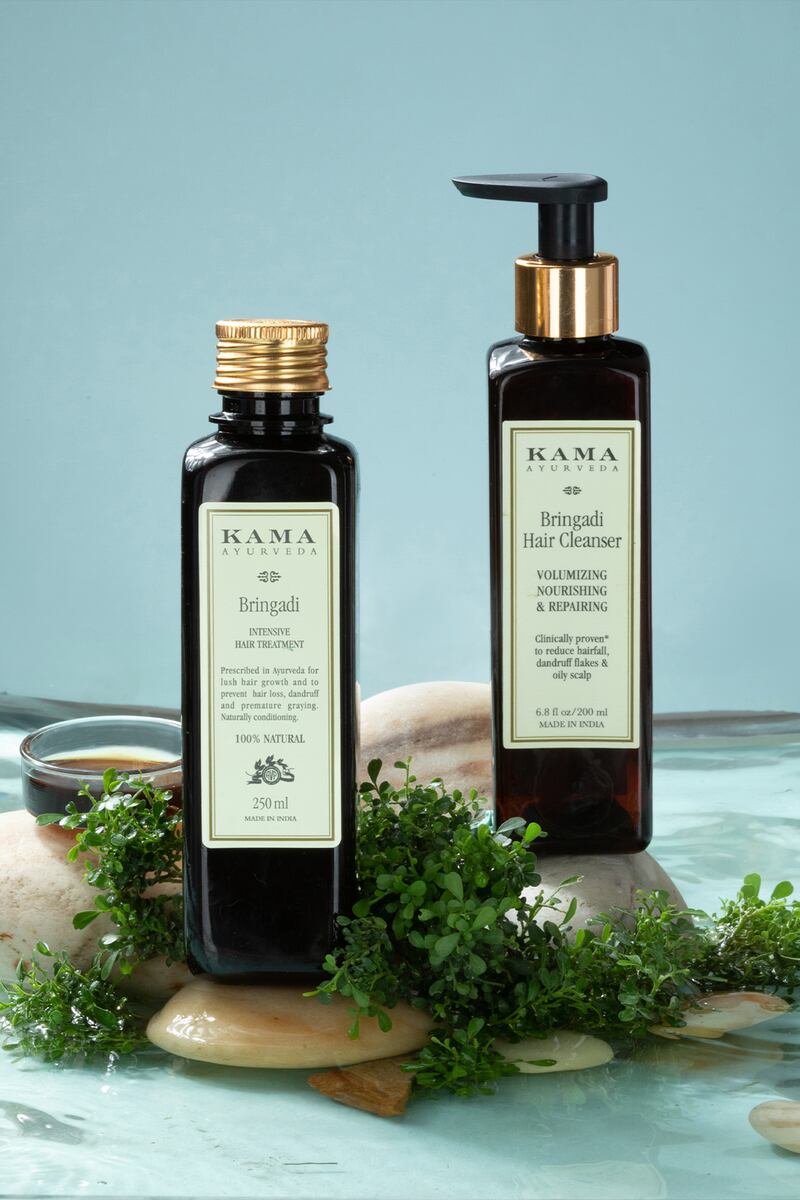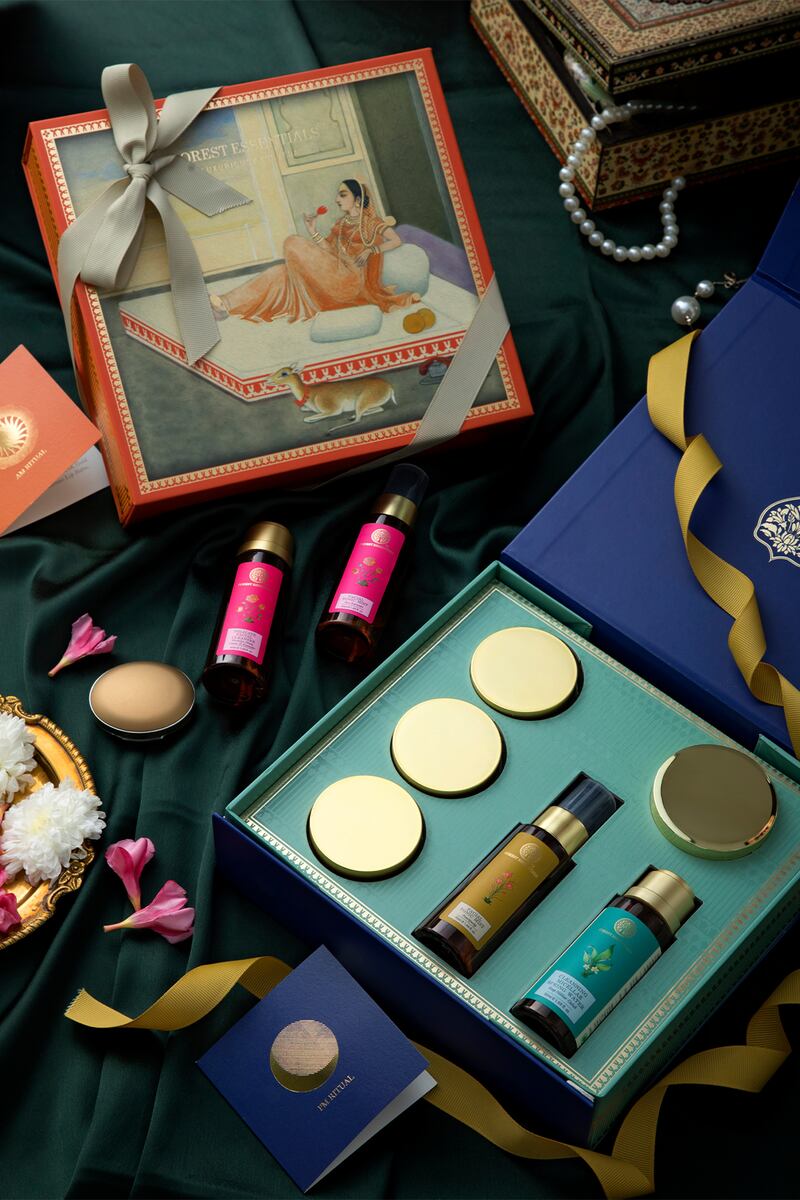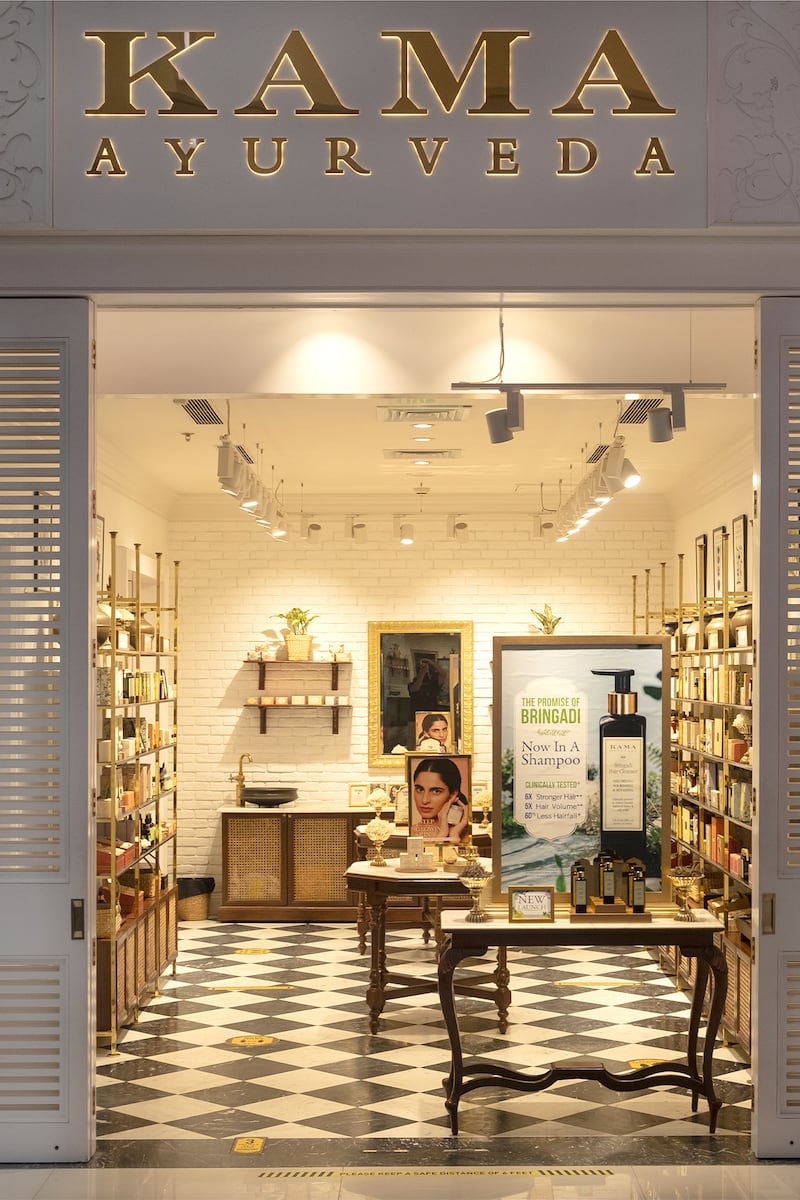
The Business of Fashion
Agenda-setting intelligence, analysis and advice for the global fashion community.

Agenda-setting intelligence, analysis and advice for the global fashion community.

Mantras are not a common ingredient in skin care, but at Forest Essentials, they are part of the process that goes into products like the brand’s ayurvedic face moisturiser.
“During the making of our cult favourite Ayurvedic Eternal Youth Formula Date & Litchi, specific mantras are chanted while the cream is mixed by hand, to lend positive vibrations to the product, which consequently energise your skin with their pure energy,” claimed Samrath Bedi, executive director of the Delhi-based brand and son of its founder Mira Kulkarni.
Forest Essentials and its close competitor Kama Ayurveda are brands rooted in India’s 5,000-year-old philosophy of holistic healing and both have attracted millions of dollars in investment from global beauty conglomerates. Forest Essentials’ parent company Mountain Valley Springs Pvt. Ltd is part owned by American beauty conglomerate Estée Lauder Companies and international orders now constitute over 30 percent of its online business. Bedi expects the brand’s October launch with UK-based e-tailer Look Fantastic to boost that figure.
“The UK is one of our largest markets,” he says. “Consumers there already have a significant knowledge of Ayurveda and a wider acceptance [of it or] buy into its philosophy and what it stands for.”
ADVERTISEMENT
Vivek Sahni, co-founder and director of Kama Ayurveda, which saw a reported minority investment of 100 crore rupees (approximately $14 million) by Spanish fashion and fragrance conglomerate Puig in 2019, is also positive about the UK market, with plans to open a store there in 2022, and has high hopes for the brand’s bestsellers, including Kumkumadi Thailam Miraculous Beauty Fluid, Pure Rose Water & Organic Hair Colour Kit and Bringadi Thailam Intensive Hair Treatment Oil. “[That will] allow us to experience a strong market before rolling out [wider] distribution,” he says.
So what is ayuverdic beauty? While there are many interpretations, it is generally associated with a range of product formulations, healing rituals and treatments across beauty and wellness which are based on principles of Ayurveda, a system of alternative medicine and philosophy with historical roots in the Indian subcontinent.
Unlike other beauty movements making their way westward — take South Korean K-beauty’s focus on “glass skin”, for example — ayurvedic beauty doesn’t have a specific look. Well, not exactly.
“Ayurveda presents a collaborative approach to organic beauty that works on three levels: outer perfection, inner beauty and ‘ojas’ [a Sanskrit term meaning vitality] or the charisma of absolute beauty, reflected in inner vitality, lustrous hair, glowing skin, clear shining eyes and an ‘inner fire’,” Bedi explained. “When the skin acquires ‘the touch and feel of silk with a dazzling glow’ it is known as ‘tejas’ [a Sanskrit term meaning illumination] or the outer reflection of beauty.”

In many ways what Kama Ayurveda and Forest Essentials are doing is packaging the legacy of an ancient civilisation in a jar, one that chimes with the global consumer’s continued interest in clean beauty.
Integral to the aura of luxury surrounding both brands is the focus on quality botanical ingredients as well as processes of extracting oils that ensure purity. The luxury packaging is merely surface dressing for the investment and commitment needed to cold press oils, use steam distillation and create formulations consisting of organic or easily regenerable wild-sourced ingredients.
A niche but rapidly growing opportunity
In 2017, the size of the global ayurvedic products market was $4.5 billion, according to Hamdard Laboratories’ chief marketing officer Suman Varma, and is projected to reach $14.9 billion by 2026, at a CAGR of 16.14 percent during that period. While India is the largest market, there is growing interest from consumers in Southeast Asian countries, China, the US and some European markets.
ADVERTISEMENT
Ayurvedic beauty products are resonating well with so called ‘clean beauty’ consumers, says Claire McCormack, editor at Beauty Independent. Those in the US and UK are “looking for plant-derived ingredients in their products, so Ayurveda and the use of ayurvedic ingredients [like] ashwagandha, turmeric, gotu kola [etcetera] in clean beauty has exploded in recent years.”
Its growing popularity has some industry leaders asking whether ayurvedic beauty could be the next big global skin care and beauty phenomenon. Though some believe the trend is close to or already at its peak, others say that the growing number of brands on the market suggests otherwise.
“Rasasara, Sahajan Skincare, Pratima Skincare and other indie brands from New York, Melbourne and Toronto are already shaping the globalised version of this traditional medicine,” says Tanya Rajani, beauty and personal care analyst at Mintel.
In addition to India-based Forest Essentials and Kama Ayurveda, there many other independent ayurvedic brands, some founded by members of the Indian diaspora.

Fable and Mane, a plant-based hair care brand inspired by ancient Indian beauty secrets founded by Nikita and Akash Mehta, two British siblings of South Asian heritage, is among those making inroads; it is already stocked across the British high street chain Boots.
According to McCormack, in North America, ayurvedic beauty brands can increasingly be seen across price points, with brands like Ranavat, Uma Oils, Soma Ayurvedic, and Love, Indus in the prestige space while UK-based Urban Veda, Paavani and new skin care brand Planktos are available at a lower price point.
Further insight on the global ayurvedic beauty market comes from Kavita Khosa, a Singapore-based Non-Resident Indian (NRI) who founded ayurvedic brand Purearth in 2012, sourcing from women’s co-operatives in the Himalayas using chemical free methods of extraction and preservation. Purearth, which has an advisory council that includes Morgan Tan, the former president of Shiseido, is carried by Hong Kong’s Lane Crawford department store, and other international launches are in the pipeline, Khosa says.
“With seasonal changes, we see more nourishing, occlusive products like our Rose & Seabuck Face Cream and Mandarin Body Butter in demand in the north in winters, while our Turmeric Exfoliant Face Sand is very popular in the summer months regardless of the region,” Khosa adds.
ADVERTISEMENT
Indian luxury brands with global ambitions
Within India, the practice of Ayurveda has experienced a renaissance in the past twenty years, part of a growing turn towards Indian heritage industries of wellness, yoga and craft. All are part of India’s post-financial liberalisation and economic growth trajectory, whereby a growing middle class aspires to Western brands whilst cultivating a deep-rooted desire to reinstate and value things considered intrinsically Indian.
In turn, Ayurveda, is also seen as an increasingly important cultural attraction that can be leveraged for business. Ayurvedic spa resorts and treatment centres continue to be a massive draw for tourists to India from across the world.
“As the West began looking at Eastern remedies, Ayurveda rose in stature and when that happened its value increased in our eyes. Even though brands such as Kama and Forest Essentials were founded in the early 2000s, ayurvedic skin care was still not seen as cool until it [was] adopted by the clean beauty and Western wellness circles,” says Vasudha Rai, former beauty director at Harper’s Bazaar India and the author of Glow: Indian Foods, Recipes and Rituals for Beauty, Inside and Out.
Ayurveda continues to be used as a form of holistic medicine and is practiced across India in ordinary homes. Among middle income consumers, more affordable brands like Biotique, Himalaya or Lotus Herbals tend to be used whereas Forest Essentials and Kama Ayurveda are popular among luxury consumers.
Ayurveda is seen as a key growth factor… with Puig. We will be expanding our footprint.
Since Estée Lauder Companies’ first took a stake in Forest Essentials 12 years ago, the brand has expanded to 90 stand-alone stores across 29 Indian cities and now exports to 100 countries through e-commerce in top export markets including the US, Singapore, the Gulf states and Australia. Like other ayurvedic brands, the Indian diaspora is a key demographic. Long-standing contracts to supply 5-star hotel chains and luxury spas complete the picture.
“[Estée Lauder Companies] has aided us towards becoming a best-in-class brand builder and direct-to-consumer retailer,” said Bedi.
Given the disruption created by the Covid-19 pandemic shortly after Puig made its initial investment in Kama Ayurveda, it is too early to assess what that capital injection means for the brand.
“Pre-pandemic, there was global interest from major players in different geographies, looking to invest in successful companies in the natural clean beauty space. Ayurveda is seen as a key growth factor… with Puig. We will be expanding our footprint in the coming year,” Sahni said.
Founded in 2002, for the first 10 years it had only nine products and sold solely through 5-star hotels. In 2012, the brand opened their first store in Delhi, and soon received their first external funding from Lighthouse Advisors India Pvt. Ltd. Kama has since grown to 49 stand-alone stores across India, 47 store-in-stores, an e-commerce site as well as sales across Amazon, Flipkart, Nykaa and Myntra.
Debates around ‘clean beauty’, efficacy and safety
Ayurveda may be primed to harness the global trend towards clean beauty, but is the clean beauty movement ready to fully embrace the complex philosophy that underpins Ayurvedic skin care?
In a similar way that certain international beauty players’ are relating to Traditional Chinese Medicine, “a lot of Ayurveda are being co-opted to be honest, and sometimes with little to no respect paid to the ancient healing system that Ayurveda is,” McCormack warned.
International industry leaders and consumers alike require more education on ayurvedic beauty, suggest Indian industry insiders, as some misconceptions persist.
“Formulations with triethanolamine (TEA), petrochemicals or formaldehyde don’t exist in Ayurveda. But ‘clean’ does not necessarily incorporate Ayurveda. A formulation with rooibos or tea tree can be clean but it isn’t an ayurvedic formulation,” says Khosa.
Ayurveda is indeed a complex philosophy. Fundamental to it are the concepts of prana or ‘life energy’ and doshas or ‘mind-body types’, namely vata (characterised by the element of air), pitta (fire) and kapha (earth). Ayurveda adherents believe that when a person is dominated by one or two of these doshas, food or skin treatments can be used to create balance.
“Ayurveda is a lifestyle; it isn’t just about a detox, herbs or oils. An ayurvedic prescription includes circadian rhythms, emotions, dreams and the environment that a person lives in,” explained Rai.
Interpreting all of this for a luxury skin care business is both an opportunity to create a highly differentiated product, and a challenge to retain its deeper philosophical underpinnings.
“It’s easier to communicate the values, ethos and efficacy of Ayurveda in our stores, where beauty assistants are available to do the same. Physical stores also allow the consumer to try and test our treatments,” Sahni said.

Kama Ayurveda and Forest Essentials, like many other ayurvedic brands, also make use of social media to educate and inform consumers, with in-house ayurvedic doctors creating regular videos, Instagram live sessions and online consultations.
In India, as in other countries around the world, there are tensions between the scientific and medical communities and practitioners of other traditional and alternative healing and wellness systems. In recent years, several high-profile scandals have seen unscrupulous entrepreneurs make bold, unsubstantiated claims linked to Ayurveda. The recent controversy around Patanjali Ayurved’s Coronil which claimed to cure Covid being an example, which the Indian Medical Association (IMA) slammed for misleading and false claims.
Almost 40 percent of non-branded ayurvedic medicine samples tested over five years by the research centre of King Edward Memorial hospital in Mumbai contained steroids and toxic metals such as arsenic, lead and mercury. Such scandals have — arguably unfairly — sullied the reputation of the wider Ayurveda movement for some science-focused Indian beauty industry leaders and consumers.
Beyond the imperative to better reassure consumers of safety and efficacy, there is a need to make clear the distinctions between ayurvedic beauty and clean beauty — and to explore ways to innovate formulations to appeal to a broader demographic.
“Although consumers are drawn to ayurvedic ingredients, there is a segment of consumers who also believe in lab-grown ingredients; 43 percent [of Indian] consumers are interested in trying beauty products with a combination of scientific ingredients [such as] collagen or hyaluronic acid with botanical ingredients,” said Rajani, citing Mintel data, concluding that there is an opportunity to merge science with Ayurveda.
This might be one strategy for brands to follow in global markets where the concept of cosmeceuticals is gaining traction. In any case, “transparency in sourcing of ingredients will become more and more important,” McCormack said.
Compliance with myriad health and safety regulations across the legal jurisdictions of various export markets is an added complication. For instance, controversy surrounding the ayurvedic practice of Rasa Shastra, a form of latrochemistry using heavy metals has led to some ayurvedic remedies being banned by The US Food and Drug Administration.
“All our products are tested for heavy metals from the National Accreditation Board for Testing and Calibration Laboratories, an accredited lab [in India] and are completely devoid of lead, mercury and any other metals, which are known to possess harmful effects on the skin,” said Bedi of Forest Essentials. “On a board level with Estée Lauder Companies’ expertise, we set up a state-of-the-art manufacturing facility in Haridwar, Uttarakhand, keeping our traditional manner of working intact while incorporating quality controls, which conform to the latest pharmaceutical guidelines, global standards and processes.”
Sahni, of Kama Ayuverda, confirms that with respect to heavy metals, “we don’t use them in our formulations” adding that “now with the introduction of QR codes across latest launches, consumers can scan and learn more about the product… We have worked tirelessly over the last four years to reincarnate Ayurveda for a customer looking for efficacy… and, yes, ayurvedic products are manufactured under the licenses issued by the concerned state licensing authority established under [India’s] Drugs & Cosmetics Act and Rules thereunder.”
Assuming that entrepreneurs like Sahni and Bedi can overcome the many challenges they face abroad — regulatory and otherwise — both are in a good position to tap into the growing global market for ayurvedic beauty products. Consumers around the world are clearly looking for alternative aesthetic and beauty rituals, new formulations and ingredients and authentic cultural heritage. That is a proposition both brands seem more than willing to offer.
The question that remains unanswered, however, is how much brands like Kama Ayuverda and Forest Essentials will have to localise their products and marketing strategies to truly go global.
Related Articles:
How India’s Nykaa Aims to Beat Sephora
Excitement for its IPO is building, but in order to realise its ambitions, more acquisitions and operational expenses might be required.
In an increasingly crowded space, makeup brands that prioritise natural ingredients are finding new ways to get their message across.
Shana Randhava, Priya Venkatesh, Heela Yang and Robin Tsai will join Imran Amed and Priya Rao to identify the entrepreneurs shaping the future of the beauty industry.
By selling existing formulas under their own name, retailers can tap into the lucrative beauty market without investing in custom formulations. But that doesn’t mean the private label model is an easy win.